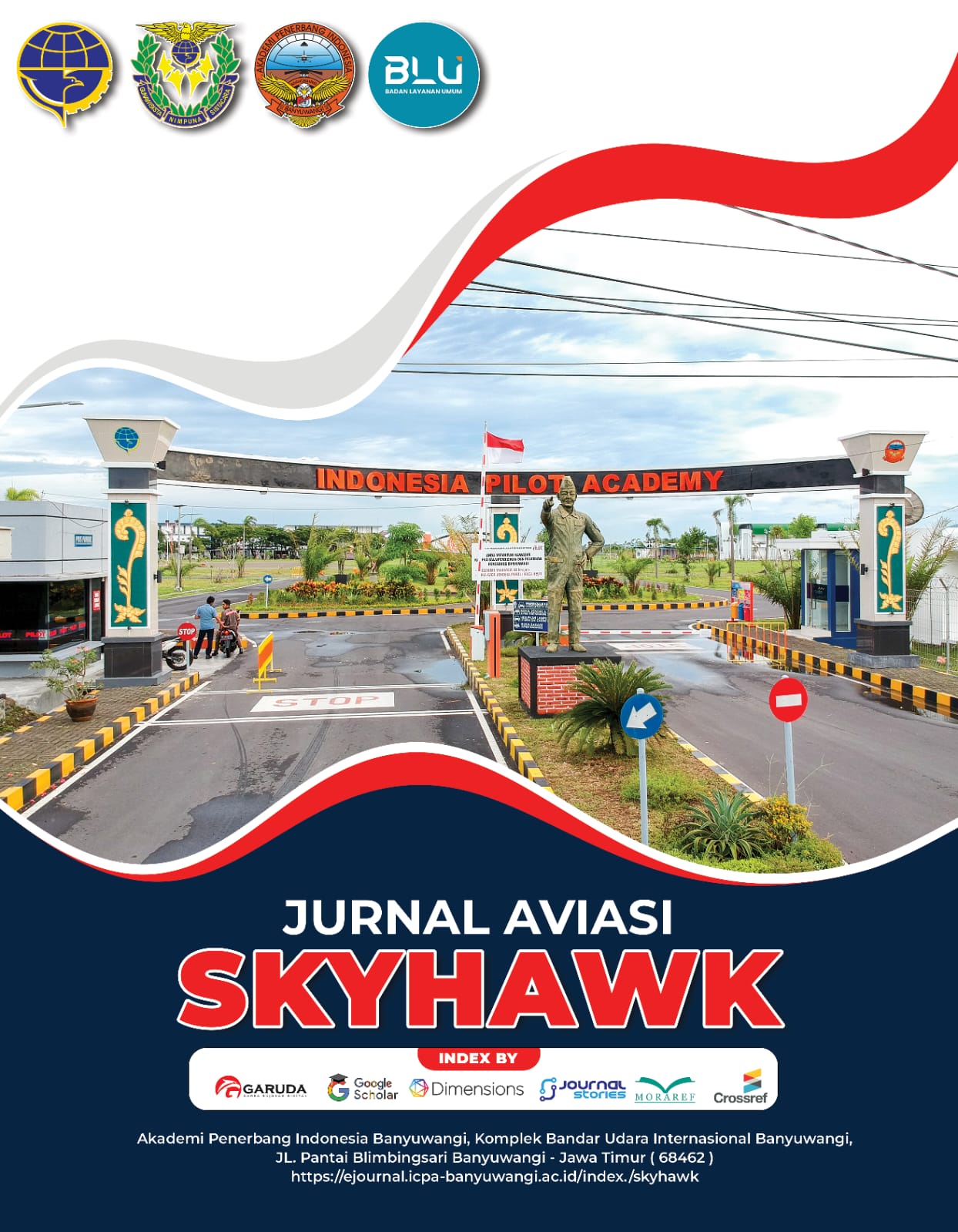Analisis Dinamika Performa Engine Turbofan Pada Boeing 737- 300 Dalam Kondisi Idle Hingga Take-Off
DOI:
https://doi.org/10.52074/skyhawk.v5i1.312Keywords:
Boeing 737-300, CFM56-3B1, TurbofanAbstract
This article discusses the performance analysis of the CFM56-3-B1 turbofan engine used on the Boeing 737-300 aircraft under various operational conditions. This study was conducted to understand the engine performance under different flight conditions, such as minimum idle, approach idle, maximum continuous, and take off. This study was conducted using a qualitative method using a descriptive approach and literature study. The results of the analysis prove that the performance of the fan, booster, and high-pressure compressor (HPC) is higher than its ideal value due to compressor imbalance and leakage that causes an increase in compression temperature. Furthermore, it was found that during the take-off process the thermal efficiency became high with an actual efficiency of 37%, but still lower than the ideal efficiency of 47%, which was caused by material friction and environmental factors. While the maximum thrust was achieved thanks to the combination of hot and cold nozzle designs. The conclusion shows that engine efficiency is affected by material friction and environmental conditions, which have an impact on reducing thermal efficiency by 9.59%. Suggestions are given to improve thermal efficiency and thrust by optimizing airflow and engine cooling.

Downloads
Published
How to Cite
Issue
Section
License
Copyright (c) 2025 CANDRA BAYU ARDIANSYAH, Rifan Satria Rizki A., Aisyah Winda N, Hadi Prayitno

This work is licensed under a Creative Commons Attribution-ShareAlike 4.0 International License.


















